India is a land of incredible history, stunning nature, and architectural marvels. Did you know there are actually 42 UNESCO World Heritage Sites in India? That’s right, 42!
In this blog post, we’ll explore 21 of these incredible places. We’ll go through ancient caves adorned with beautiful paintings, marvel at forts that stand tall like giants, and wander through bustling cities frozen in time. Get ready to be amazed by the sheer variety and beauty of India’s heritage!
21 UNESCO World Heritage Sites in India
Table of Contents
Agra Fort
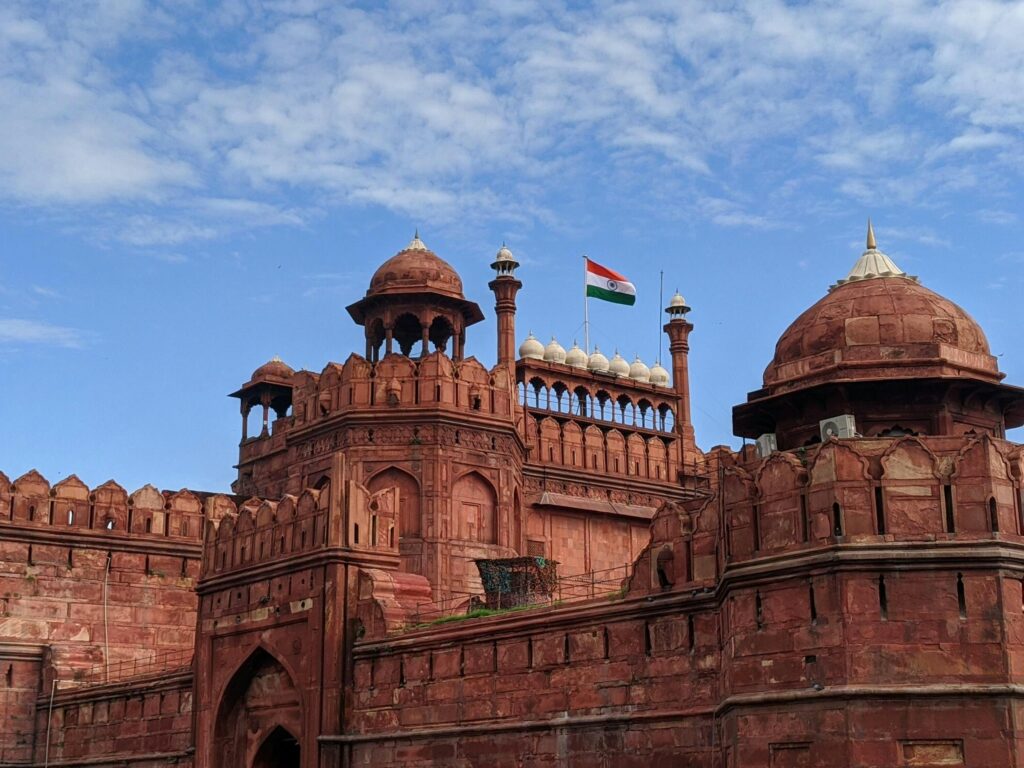
Agra Fort, also known as the Red Fort of Agra, is a majestic 16th-century monument in Agra, India. It was built by Mughal emperor Akbar. it was the main residence of Mughal rulers until 1638.
This UNESCO World Heritage Site is a red sandstone fort. It has many palaces, mosques, and audience halls. It’s a captivating blend of military power and imperial grandeur.
It is located just 2.5 kilometers northwest of its the Taj Mahal. Agra Fort offers a glimpse into the rich and lavish lifestyle of the Mughal emperors.
Ajanta Caves
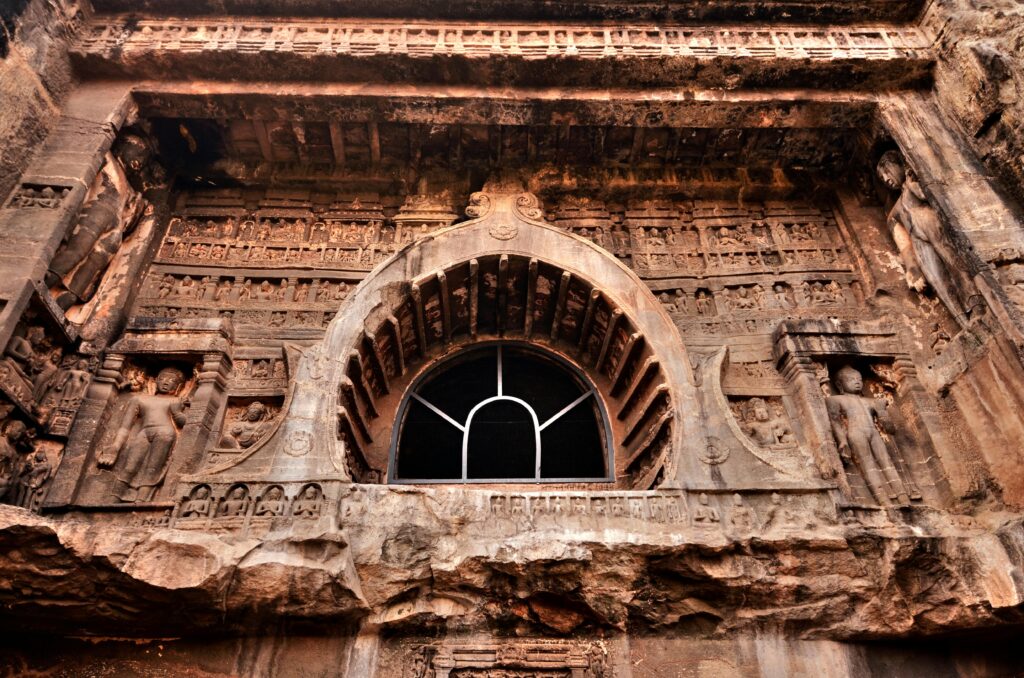
Carved into cliffs over two millennia ago (2nd century BCE to 6th century CE), the Ajanta Caves in India are a treasure of Buddhist art. These 30 cave monuments are renowned for their breathtaking paintings and intricate sculptures, all depicting themes of Buddhism.
They build these caves in two distinct phases. The earlier ones, reflecting the Theravada tradition, showcase a simpler style. Later caves, linked to Mahayana Buddhism, are grander and adorned with elaborate murals. These sculptures depict stories from the Buddha’s past lives (Jataka tales) and various Buddhist figures.
Beyond their artistic beauty, the Ajanta Caves offer a unique window into ancient India. They reveal insights into the religious beliefs, artistic techniques, and even the social life of the period. This is why the caves are rightfully designated a UNESCO World Heritage Site, inspiring and captivating artists and scholars worldwide.
Ellora Caves
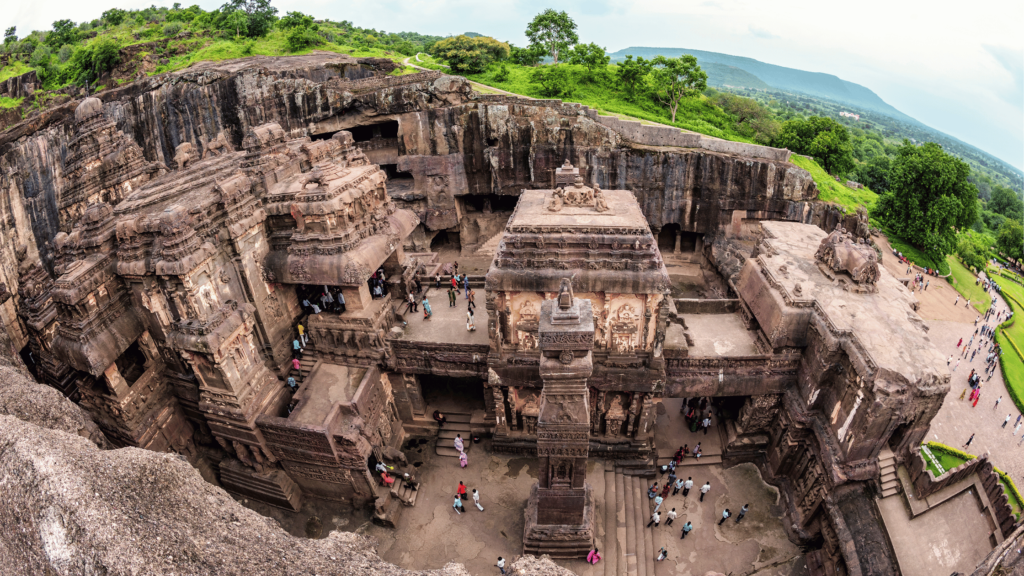
The Ellora Caves are one of the UNESCO World Heritage Sites in Maharashtra, India. It’s one of the largest rock-cut Hindu temple cave complexes in the world, featuring artwork dating from 600-1000 CE. The complex also includes several Buddhist and Jain caves.
The Ellora complex is a leading example of Indian rock-cut architecture. Several caves are not strictly caves in that they have no roof. Cave 16 features the largest single monolithic rock excavation in the world, the Kailash temple, a chariot-shaped monument dedicated to the god Shiva.
Taj Mahal
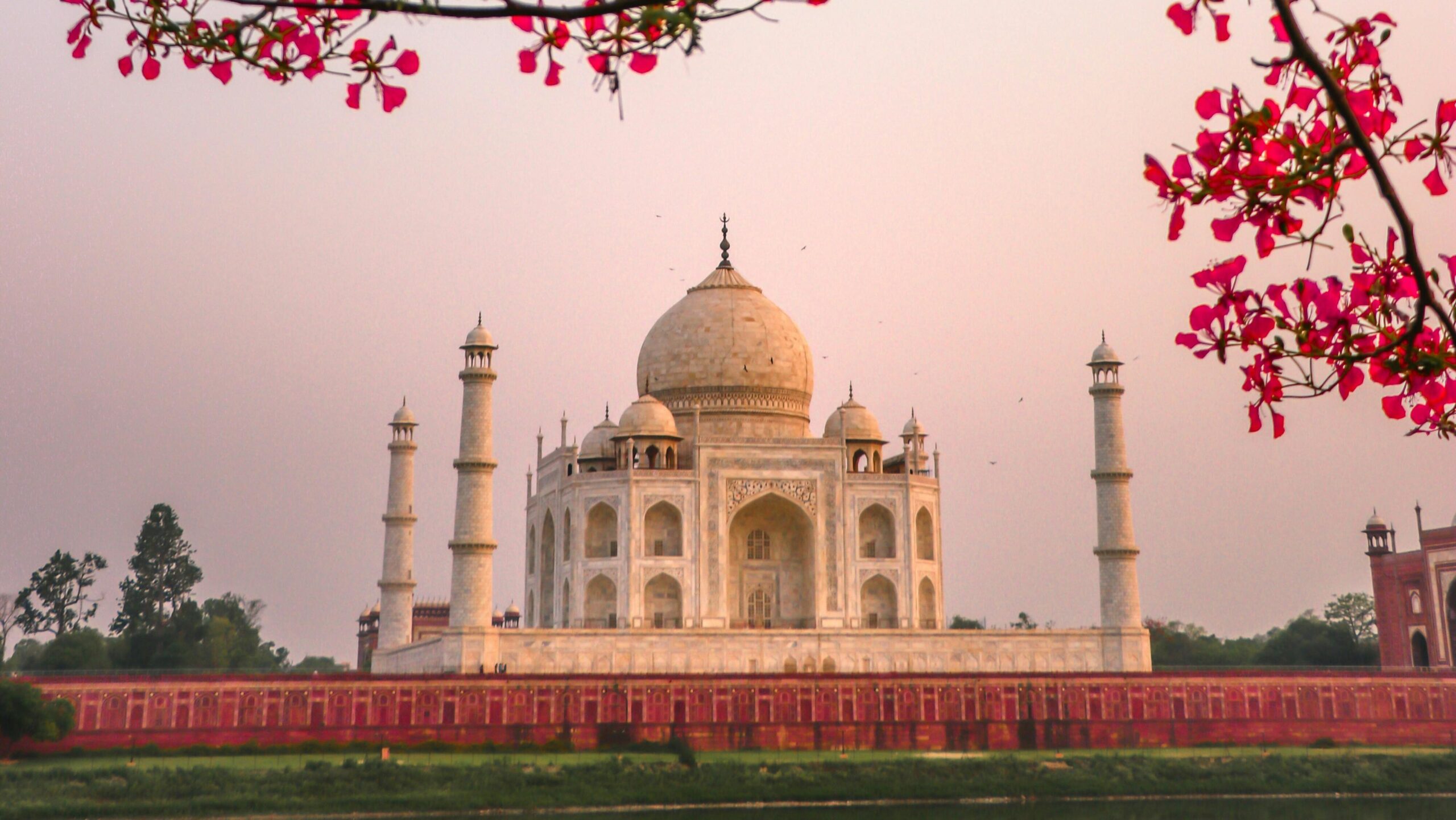
Taj Mahal is another architecture marvel from Uttar Pradesh, India. It is a white marble mausoleum situated on the banks of Yamuna. It was built by Mughal Emperor Shah Jahan to house a tomb of his second wife- Mumtaj Mahal. Tomb of Shah Jahan is also there in Taj Mahal.
The Taj Mahal is widely recognized as “the jewel of Muslim art in India and one of the universally admired masterpieces of the world’s heritage” by UNESCO World Heritage Centre. It is one of the most visited tourist destinations in India.
The Taj mahal is known for its Indo-Islamic style that combines elements from Persian, Turkish, Indian, and Islamic architectural styles. The mausoleum is made of white marble inlaid with semi-precious stones, including jade, carnelian, lapis lazuli, malachite, and turquoise. The design is symmetrical and features four minarets pointing outwards, at the corners.
Group of Monuments at Mahabalipuram

The Group of Monuments at Mahabalipuram is a collection of incredible religious monuments created between the 7th and 8th centuries AD. It’s located in the coastal town of Mahabalipuram, Tamil Nadu, India, on the Bay of Bengal. This place is a UNESCO World Heritage Site, and for good reason! The monuments are a fascinating mix of religion, culture, and legends all rolled into one. They were carved from giant rocks or built within them, showing a deep connection between nature and sculpture. There are about 40 monuments at the site.
Sun Temple, Konârak
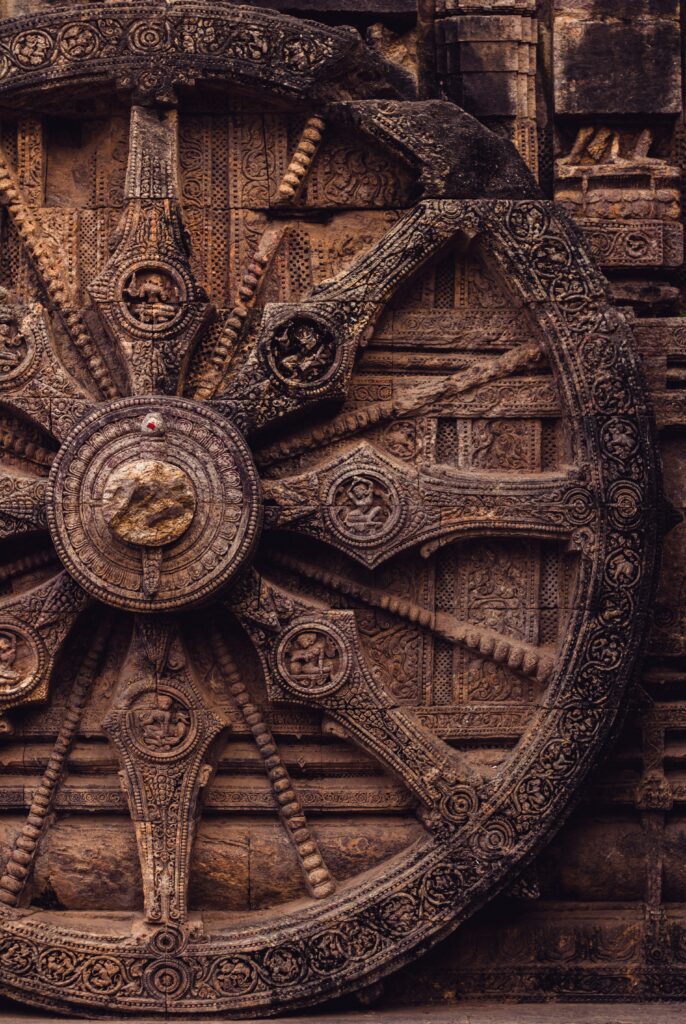
The Konark Sun Temple is a 13-century temple situated in Odisha and one of the most famous Brahman sancturies in India. It is dedicated to the God Sun.
The temple is designed in the form of a giant chariot with 24 intricately-carved wheels, each about 10 feet in diameter. The chariot is pulled by seven horses, symbolizing the seven days of the week.
The temple was built by King Narasimhadeva I of the Eastern Ganga dynasty around 1250 CE. It is an outstanding example of Kalinga architecture, which is characterized by its curvilinear towers and intricate sculptural reliefs.
Kaziranga National Park
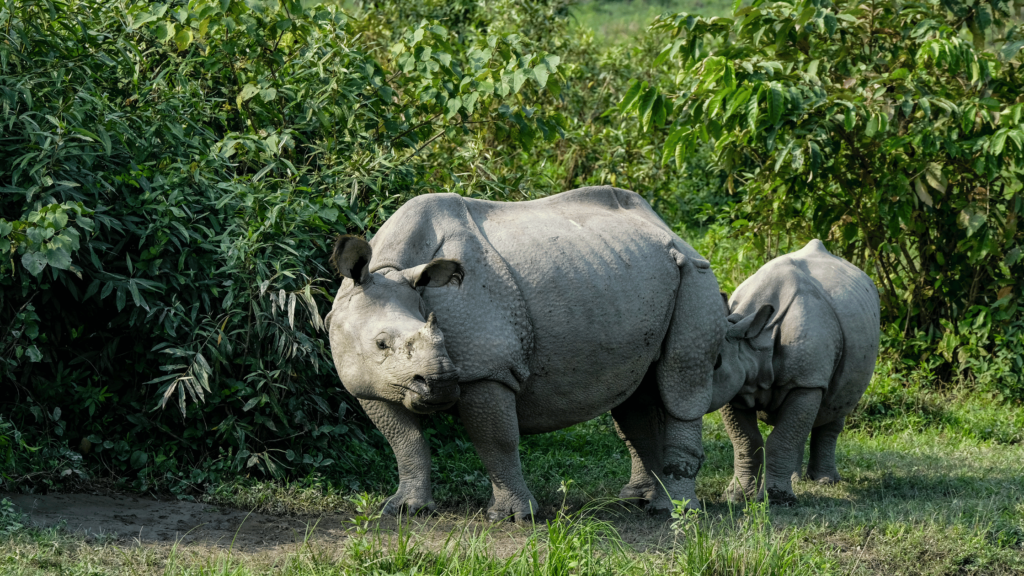
This national park is situated in Assam state of India. It houses the massive two-third population of world’s Indian one-horned rhinoceroses.
- The park was established in 1905 as a reserve forest.
- According to the census held in March 2018, the rhino population in Kaziranga National Park is 2,613.
- The park is also home to a variety of other animals, including tigers, elephants, wild water buffalo, and swamp deer.
- Over 1,700 species of birds have been recorded in the park, making it an Important Bird Area.
Keoladeo National Park
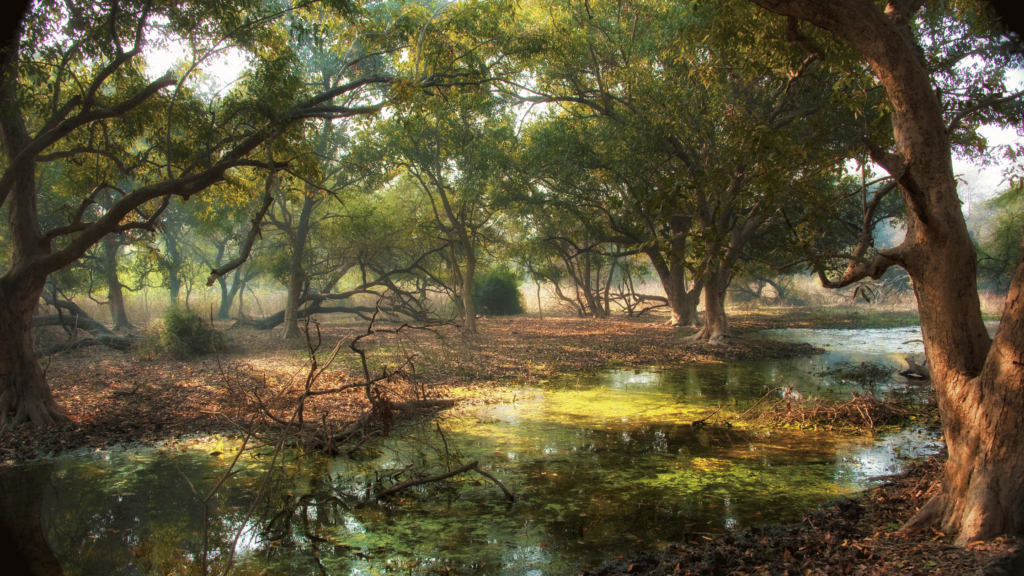
The Keoladeo National Park, also known as Keoladeo Ghana National Park, is a national park situated in Bharatpur, Rajasthan, India.This park is known for its diverse birdlife. Over 375 species of birds have been recorded here, including migratory birds from as far as Siberia, Afghanistan, Turkmenistan and China. Some notable feathered residents include the Siberian crane, resident breeding birds and a large congregation of aquatic birds.
This UNESCO World heritaage site is an excellent example of wetland ecosystem that has been home for many migrating birds and breeding home for the resident ones.
Manas Wildlife Sanctuary

This national park is situated in Assam and is home to a rich biodiversity. It is known for the endangered species habitat. In total, there are nearly 60 mammal species, 42 reptile species, 7 amphibians and 500 species of birds, of which 26 are globally threatened.
You can find unique and rare species like Assam roofed turtle, hispid hare, golden langur and pygmy hog. Manas is also famous for its population of the wild water buffalo.
Mammals found in this national park such as elephant, tiger, greater one-horned rhino, clouded leopard, sloth bear, and the wild water buffalo, which is probably the only pure strain of this species still found in India.
Churches and Convents of Goa
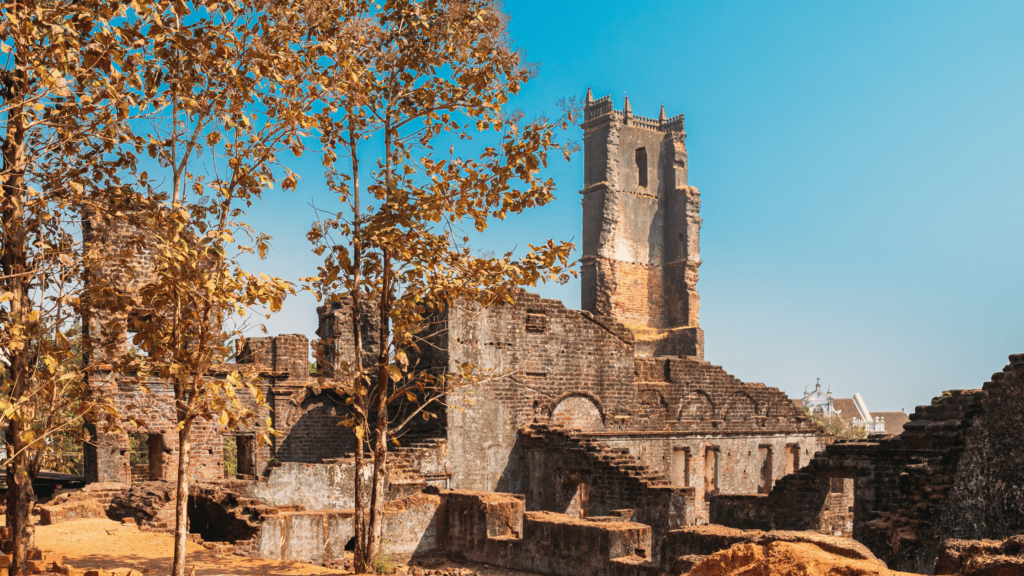
This is a site that comprises 7 churches and convents built by Portugese in 16th and 17th century when Goa was the capital of Portuguese India and a center for evangelism in Asia. The architecture reflects a unique blend of Indian and Portugese styles and they are considered to be some of the finest examples of Christian architecture in Asia.
Here’s a list of the Churches and Convents of Goa:
- Sé Cathedral
- Basilica of Bom Jesus
- Church of St. Francis of Assisi
- Chapel of St. Catherine
- Ruins of the Church of St. Augustine
- Church of Divine Providence (São Caetano or Saint Cajetan)
Fatehpur Sikri
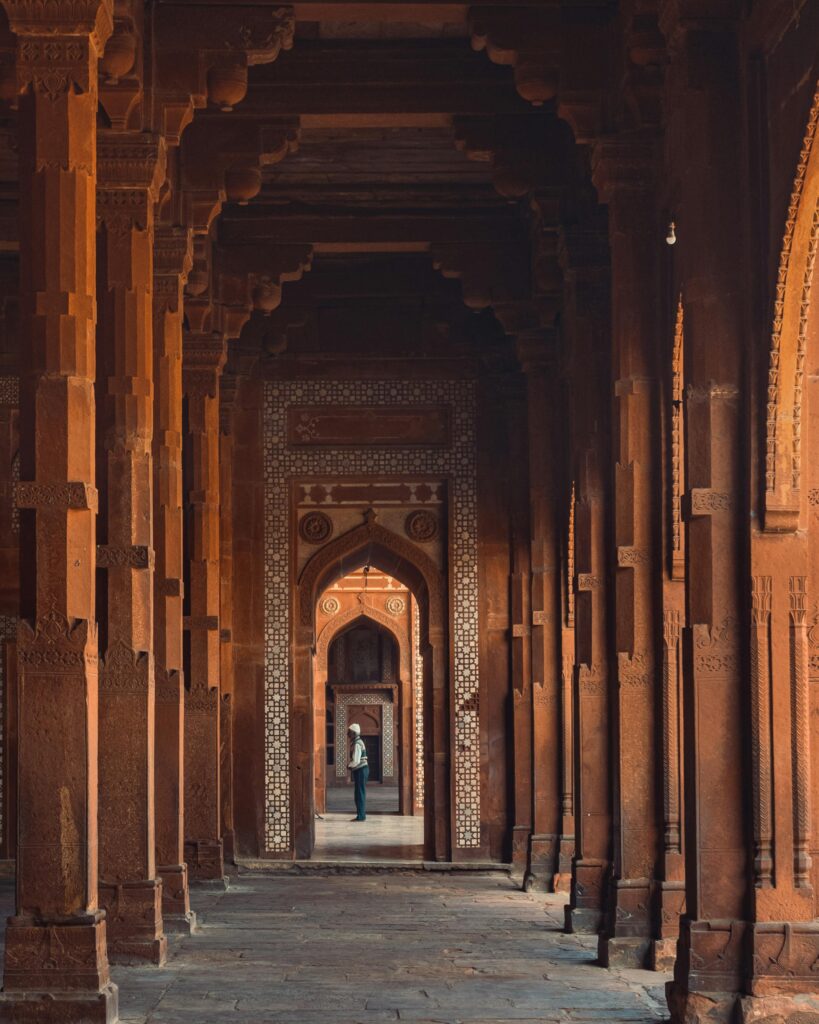
Fatehpur Sikri is a abandoned city established by Mughal Emperor Akbar in 1569. It was supposed to be the capital city of the empire. However, due to shortage of water for the growing population, it was left abandoned. There are a few buildings that shows the blend of Hindu and Mughal architecture such as Buland Darwaza, Jama Masjid (one of the biggest mosques in India), the Tomb of Salim Chishti, and the Panch Mahal.
Today, Fatehpur Sikri is a popular tourist destination. The city is well-preserved and provides a glimpse into the Mughal era.
Group of Monuments at Hampi

Hampi was the capital of the Vijayanagara Empire from 1336 to 1565. It was one of the most prosperous and influential empires in Indian history. It was later abandoned after a defeat by Muslim Deccan sultanates.
The site contains over 1,600 temples, palaces, fort ruins, elephant stables, and other structures from the Vijayanagara era. Hampi is considered a religious center, with the Virupaksha Temple, an active Adi Shankara-linked monastery and various monuments belonging to the old city.
Khajuraho Group of Monuments
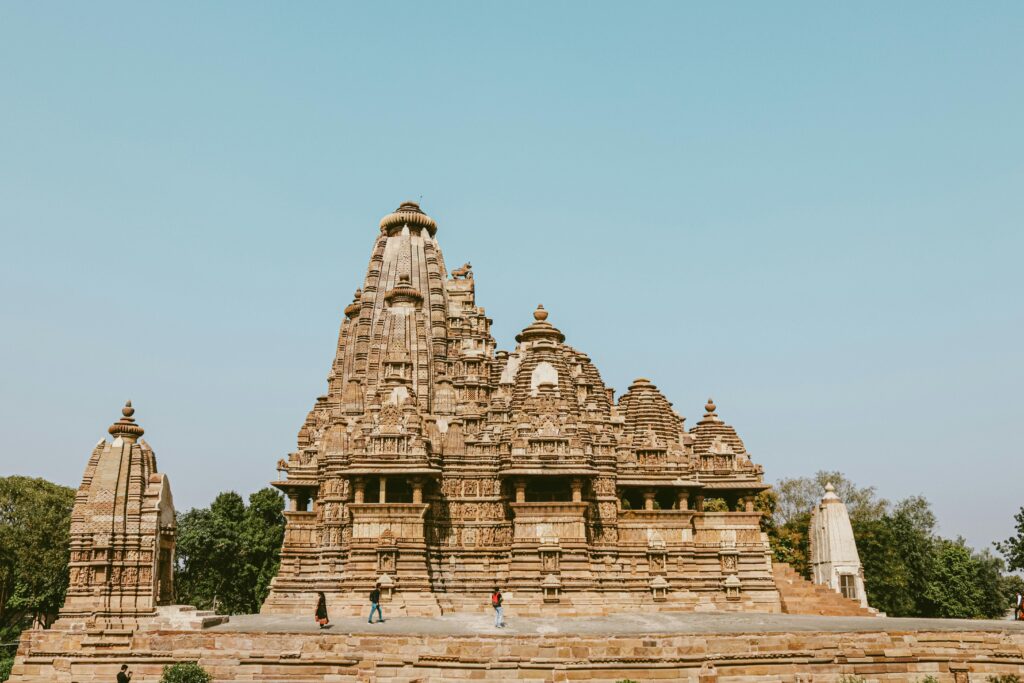
The Khajuraho Group of Monuments are a collection of Hindu and Jain temples located in Chhatarpur district, Madhya Pradesh, India. Even though only a few sculptures depic erotica, Khajuraho is known for it. It showcases the open-mindness and education regarding the topic in ancient India.
If you are someone who loves to learn abour ancient India, you must visit this site.
The temples were built by the Chandela dynasty during a period of prosperity between 950 and 1050 CE. Only about 20 of the original temples remain today. Khajuraho is a archaeological site in India and one of the most important UNESCO world heritage sites in India.
The intricate carvings and sculptures, depict a wide variety of subjects, including religious scenes, everyday life, and erotic scenes. The erotic sculptures have been the subject of much debate, but they are now seen as an important part of Indian art and culture.
Elephanta Caves

The Elephanta caves are situated on Elephanta Island or Gharapuri Caves (city of caves) in Mumbai, Maharashtra. The Elephanta Caves are a collection of cave temples predominantly dedicated to the Hindu god Shiva.
These rock-cut caves include five Hindu caves, a few Buddhist stupa mounds, and two Buddhist caves with water tanks. Elephanta caves are built in between the 5th and 6th centuries AD approximately.
The main temple’s orientation as well as the relative location of other temples are placed in a mandala pattern. The carvings narrate Hindu history.
Great Living Chola Temples 13
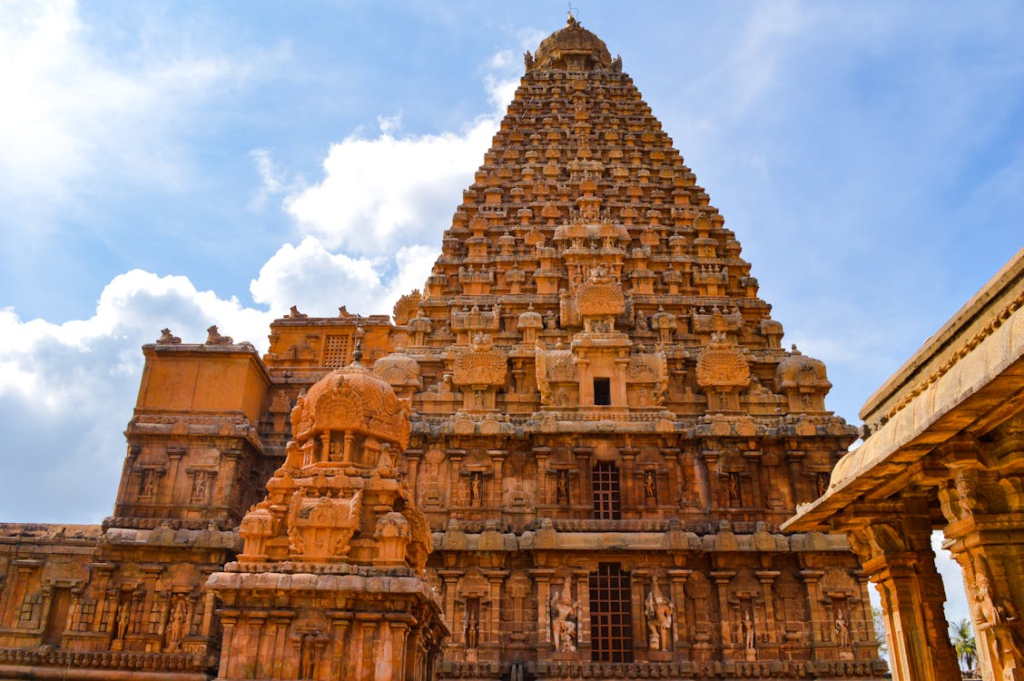
The group of three ancient temples in Tamil Nadu are the 13th UNSECO world heritage sites in India, hence the name! These temples represent the zenith of Dravida architecture during the Chola dynasty’s rule in the 11th and 12th centuries.
King Raja Raja Chola I built a Brihadeshwara Temple in Thanjavur that depicts scenes from Hindu and Chola History. Rajendra Chola I, son of Raja Raja Chola I built Brihadisvara Temple, Gangaikonda Cholapuram. It is a smaller version of the Thanjavur temple.
Rajaraja Chola II built Airavatesvara Temple, Darasuram. This temple is known for its harmonious proportions and intricate stonework. The temple complex also houses a smaller shrine dedicated to Vishnu, which showcases beautiful bronze statues.
Group of Monuments at Pattadakal

The Group of Monuments at Pattadakal are located in the Bagalkot district of Karnataka, India. It’s a complex of 10 beautiful temples, mostly Hindu with one Jain temples. These temples date back to the 7th and 8th centuries CE. They represent the mixture of an artistic fusion between northern and southern styles of Indian architecture, achieved during the reign of the Chalukya dynasty.
The most prominent temples within the Group of Monuments at Pattadakal:
- Virupaksha Temple: The largest and most well-preserved monument within the complex, built around 740 AD by Queen Lokamahadevi
- Mallikarjuna Temple: Built around 740 AD by Queen Trailokya Mahadevi
- Sangameshwara Temple: The earliest temple within the complex, dating back to the reign of King Vijayaditya in the late 7th century.
- Jain Narayana Temple: This was likely built in the 9th century during the reign of Krishna II of the Rashtrakutas.
Sundarbans National Park
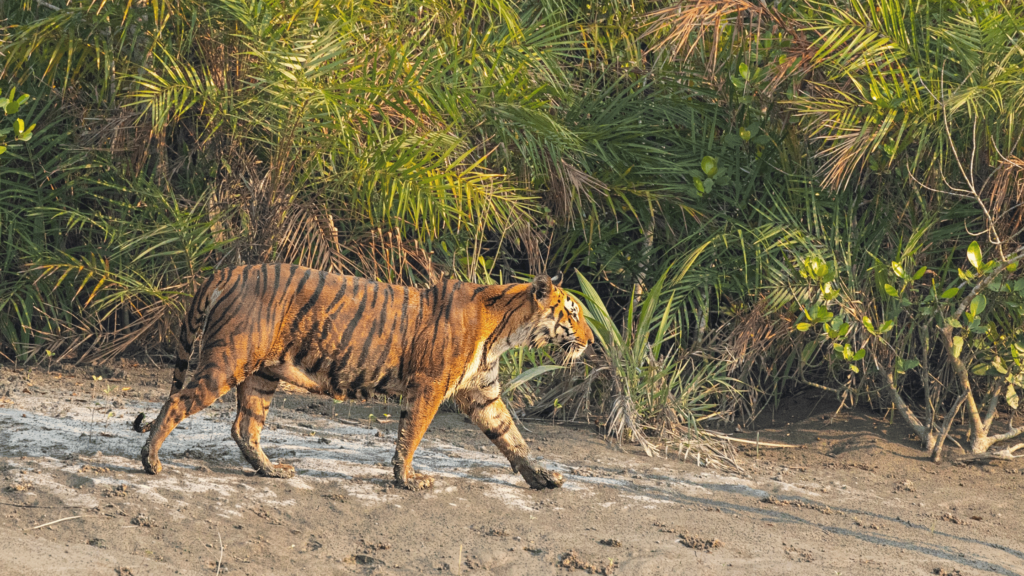
It is one of the largest mangrove forests in the world and they help to protect the coastline from cyclones and erosion. The park is famous for its Royal Bengal tigers, which have adapted to a semi-aquatic lifestyle.
Area: 1,330 sq km (510 sq mi)
Established: 1984
The park is connected by waterways from many parts of West Bengal such as Kolkata Canning, and Gosaba.
Nanda Devi and Valley of Flowers National Parks
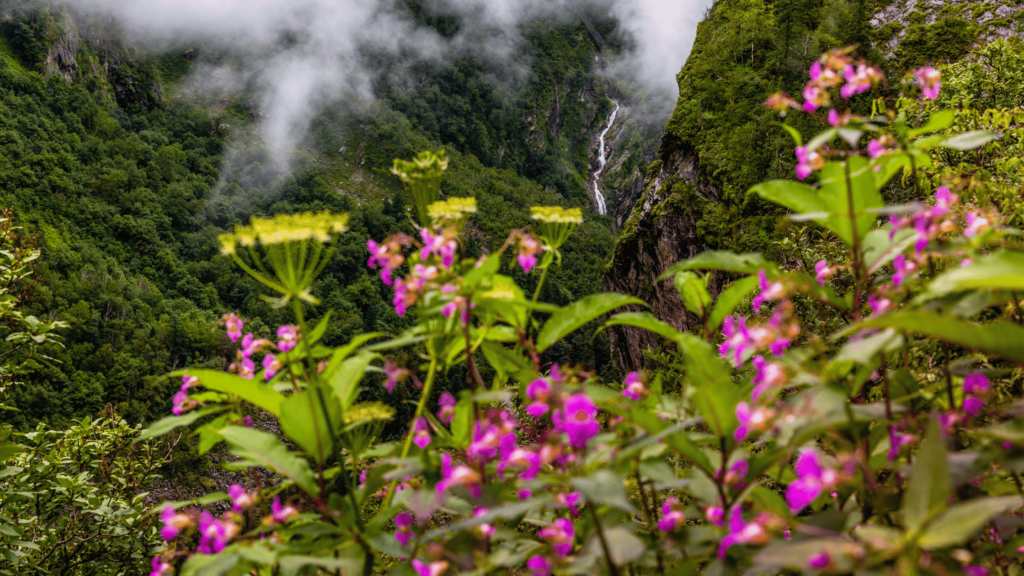
It is situated in the Chamoli district of Uttarakhand, India. It is known for spectacular mountain scenery, diverse flora and fauna, and rich cultural significance. This national park houses India’s second-highest mountain peak, Nanda Devi, with an astounding height of 7,817 meters (25,646 ft).
Many adventures seekers love to trek to the base camp of Nanda Devi Peak. The trek is known as Valley of Flowers Trek. The trek offers unparalleled naaturaal beauty with snow caped mountains, gorgeous flowers, and diverse wildlife!
It is also a significant pilgrimage site for Hindus, as Nanda Devi mountain is considered sacred in Hinduism.
Buddhist Monuments at Sanchi

These are the magnificent collection of Buddhist monuments situated in Sanchi, Madhya Pradesh. Development began in the 3rd century BCE during the Mauryan Empire under Emperor Ashoka, a pivotal figure in the spread of Buddhism.
Monuments to pay visit:
- Stupas
- Toranas (Gates)
- Monasteries (Viharas)
- Pillars (Stambha)
The Buddhist Monuments at Sanchi offer a glimpse into the early history and artistic expression of Buddhism in India.
Humayun’s Tomb, Delhi
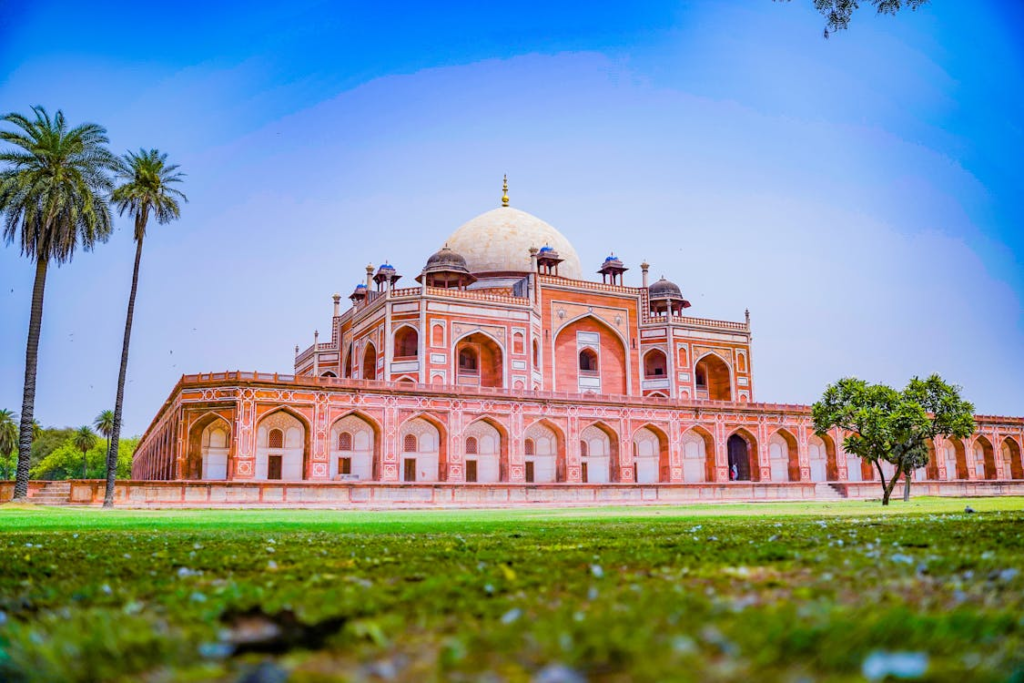
It was built in the mid-16th century (1555-1572) as the tomb of Mughal Emperor Humayun. Considered the first substantial example of Mughal garden tomb architecture in India. Inspired the design of the iconic Taj Mahal, built by Humayun’s great-grandson Shah Jahan.
Qutb Minar and its Monuments, Delhi

These were built in 12th century by Qutub-ud-din Aibak, the first Sultan of Delhi.
Surrounding Monuments:
- Quwwatu’l-Islam Mosque: The oldest mosque in Delhi, built with materials from demolished Hindu and Jain temples.
- Iron Pillar: A mysterious pillar made of wrought iron that stands defying rust and corrosion for centuries that was constructed by Chandragupta II.
- Alai Darwaza: An ornate gateway built in the early 14th century, considered a masterpiece of Indo-Islamic art.
- Tomb of Iltutmish: The mausoleum of Sultan Iltutmish, showcasing early Mughal architectural influences.
- Several other tombs and ruins: Scattered throughout the complex, offering glimpses into the architectural styles of the Delhi Sultanate period.
Frequently Asked Questions About UNESCO World Heritage Sites in India
How many UNESCO World Heritage Sites are there in India?
There are currently 42 UNESCO World Heritage Sites in India.
Which state has the maximum UNESCO World Heritage Sites in India?
Maharashtra. It boasts a total of five UNESCO World Heritage Sites.
Which UNESCO World Heritage Sites in India are in danger?
Luckily, as of today, 2024, there are no Indian World Heritage Sites on the UNESCO List of World Heritage in Danger.
Read Also-> 15 Best Places to Visit in India in January
You May Also Like->
- Best 17 Places to Visit in Rajasthan

- Best 18 Places to Visit in Agra

- 23 Stunning Places to Visit in Khajuraho
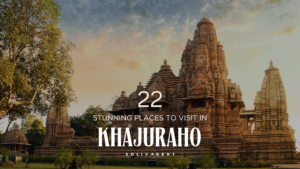
- 22 Top UNESCO World Heritage Sites in India- Part 2

- 21 UNESCO World Heritage Sites in India- Part 1
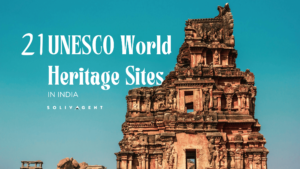
- 15 Best Places to Visit in India in January in 2025

- 9 Best Indian Festivals in 2024- Part 1


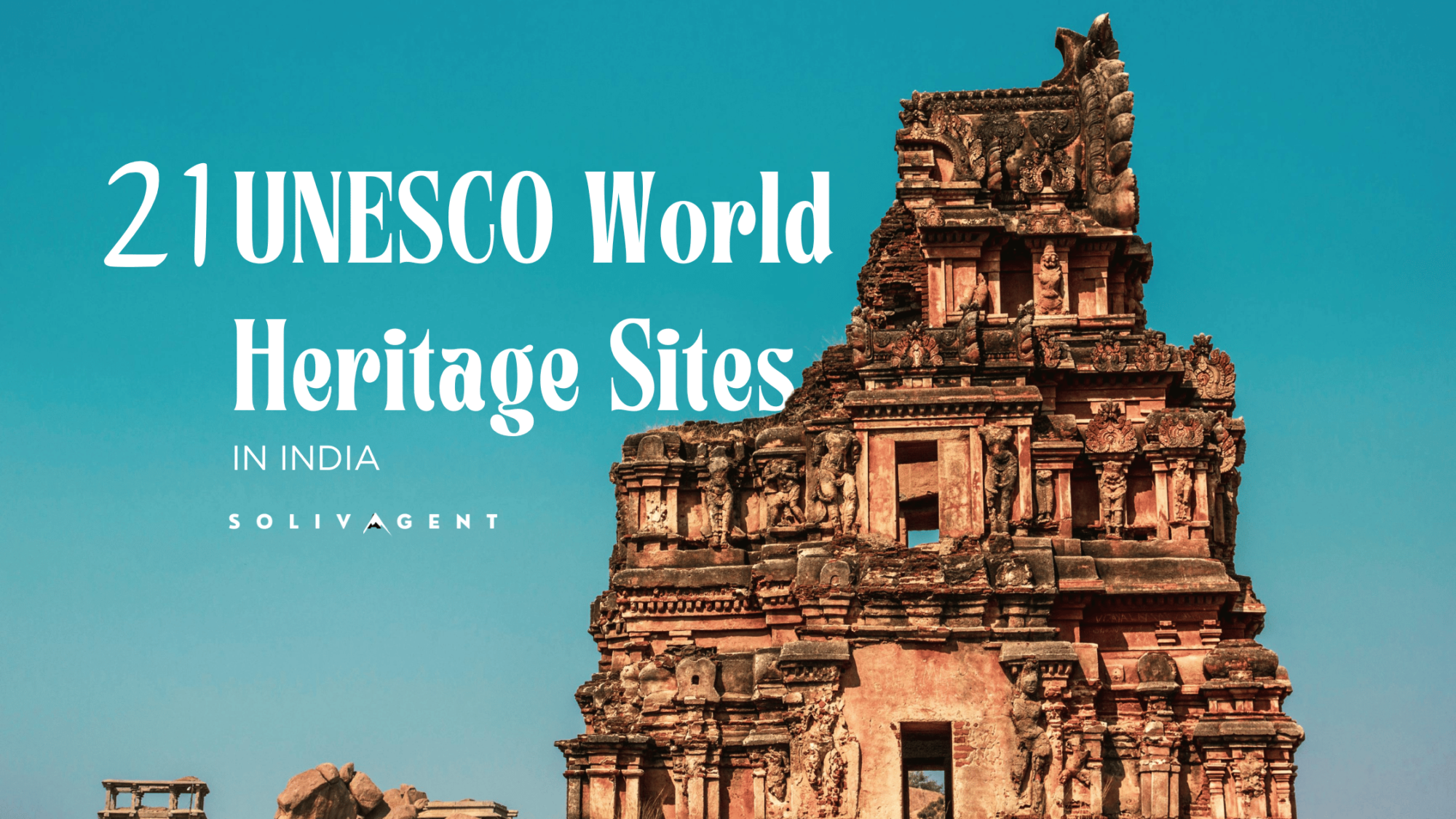
Techno rozen This is really interesting, You’re a very skilled blogger. I’ve joined your feed and look forward to seeking more of your magnificent post. Also, I’ve shared your site in my social networks!
thank you
Techarp naturally like your web site however you need to take a look at the spelling on several of your posts. A number of them are rife with spelling problems and I find it very bothersome to tell the truth on the other hand I will surely come again again.